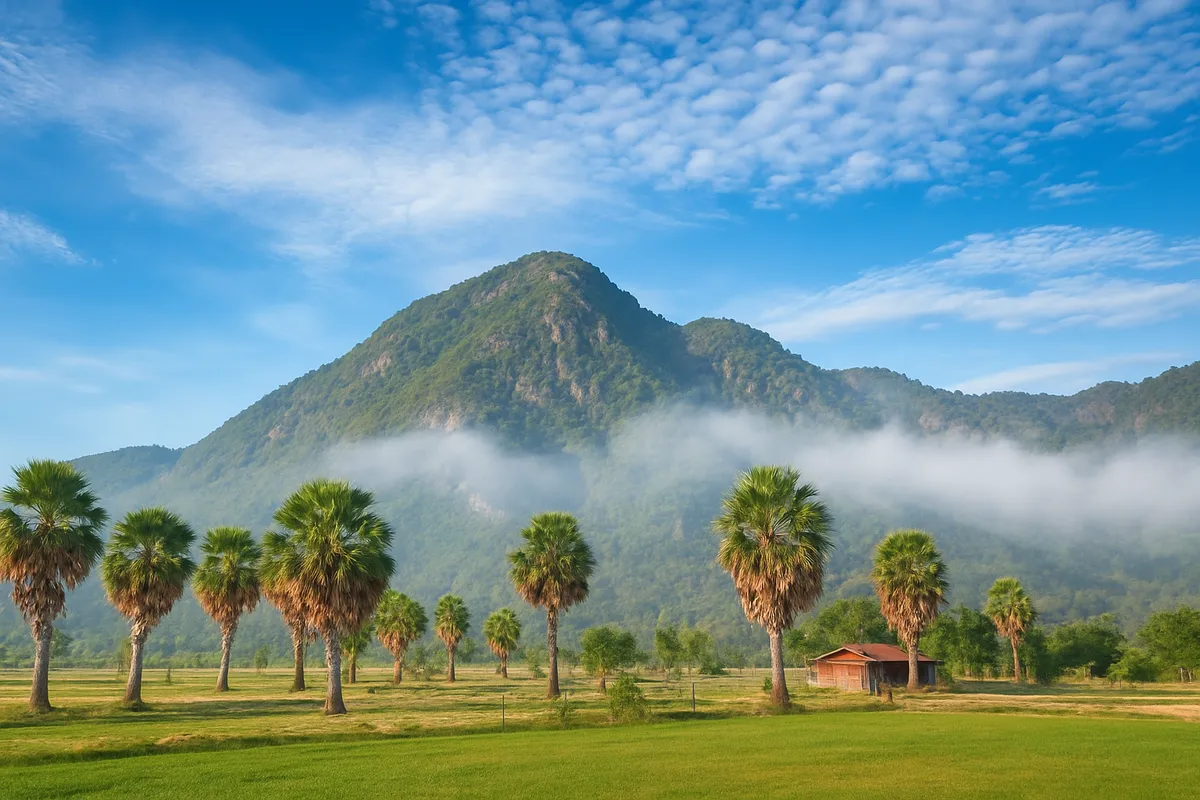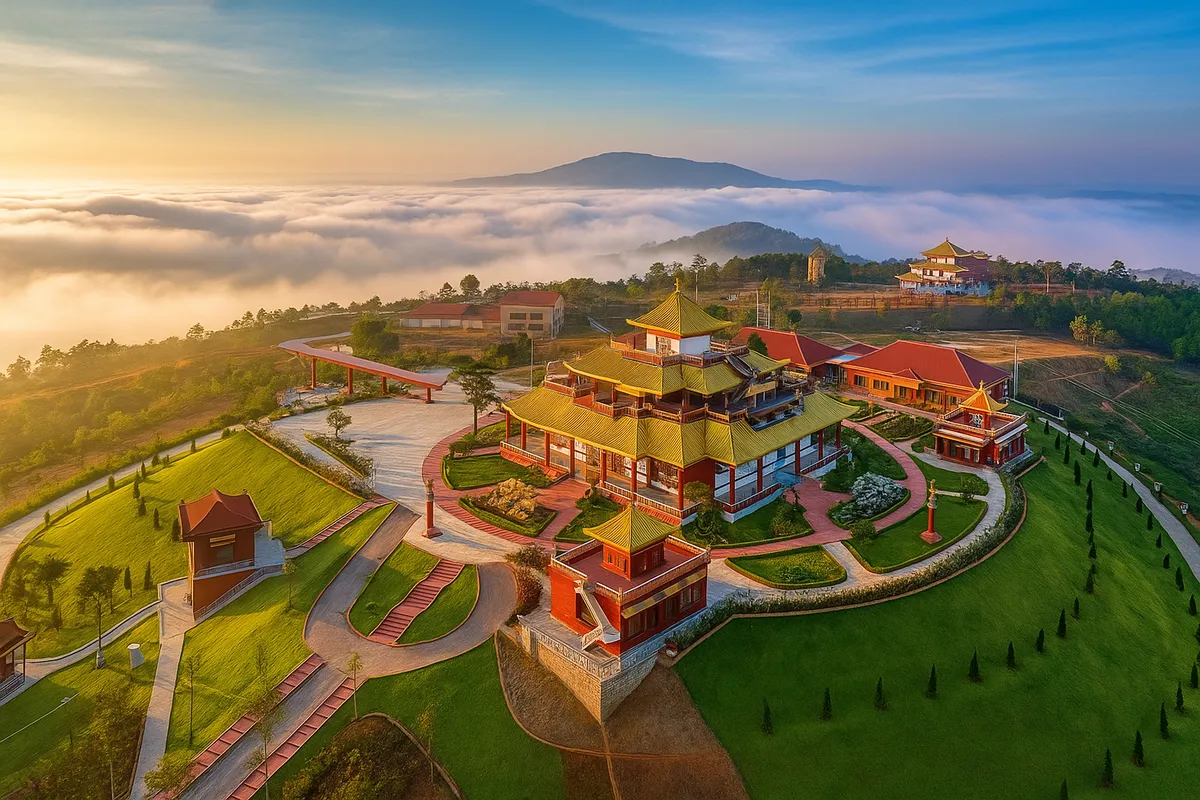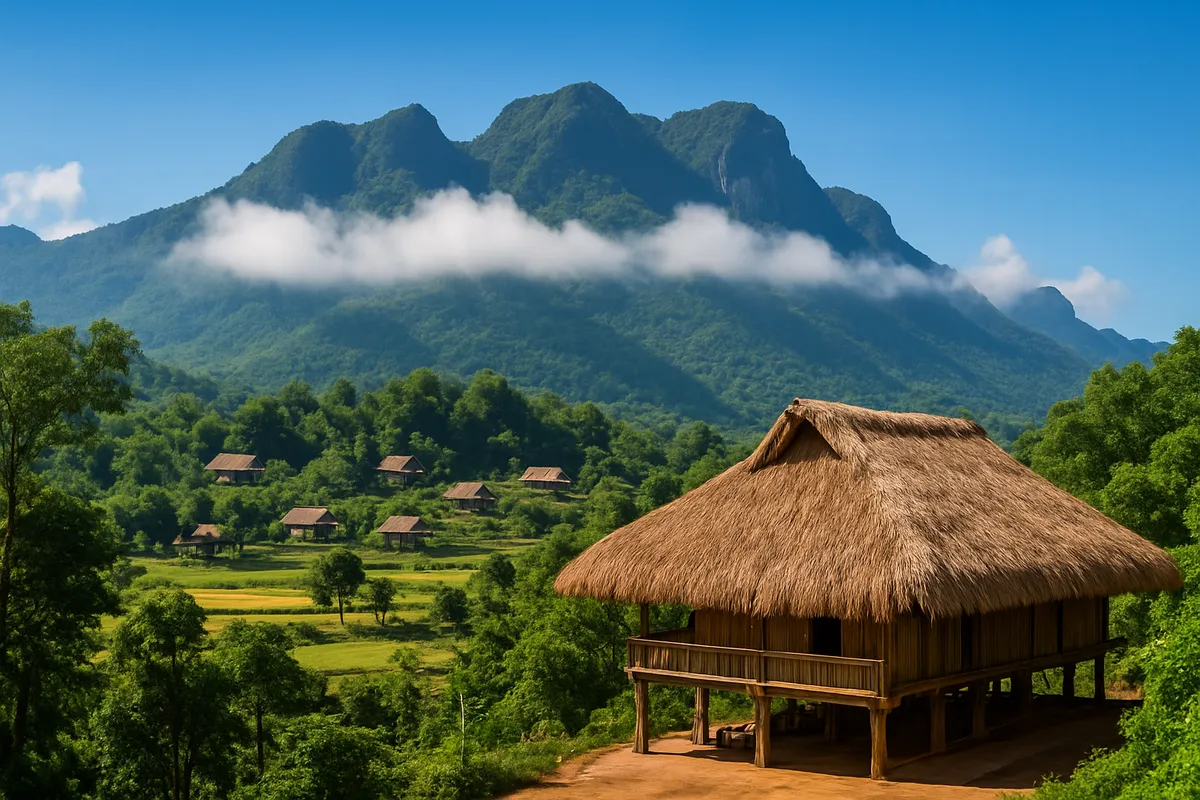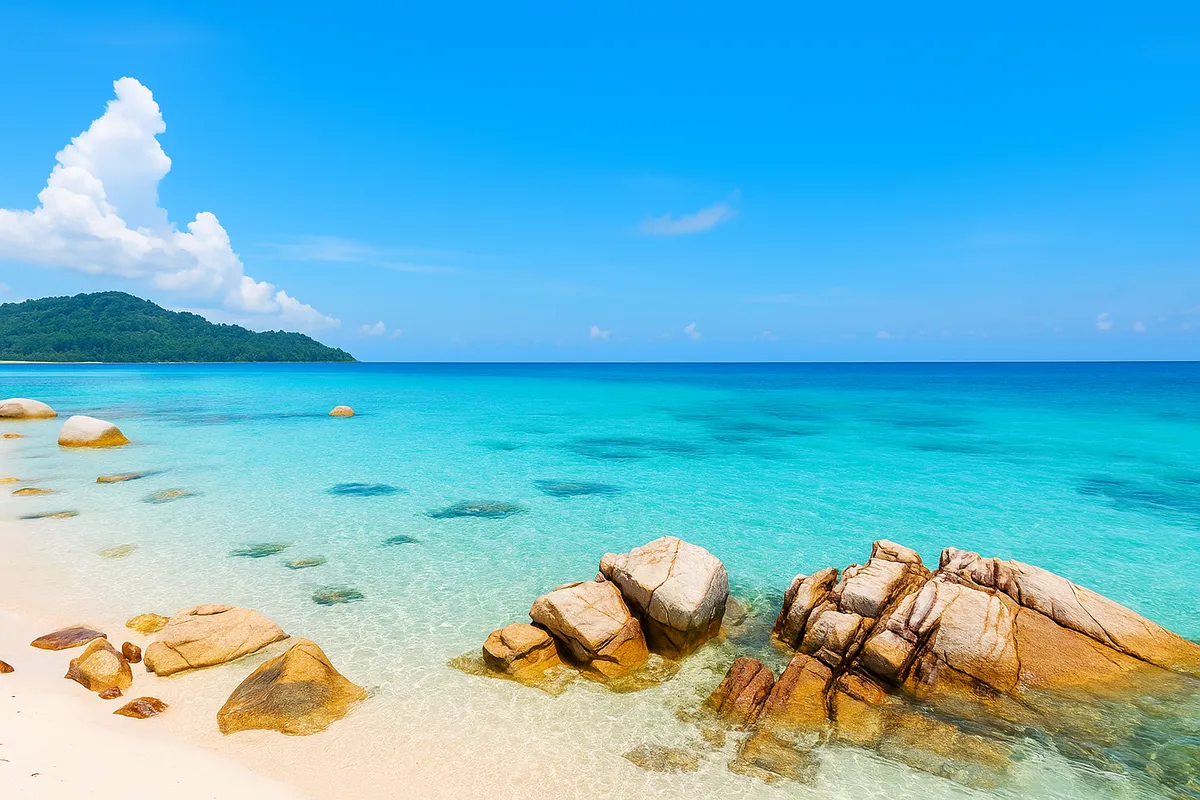Bac Ha Market and the secret of the White Highlands
- Sunday, Apr 20, 2025, 22:32 (GMT+7)
Bac Ha Market and the secret of the White Highlands
On a quiet Sunday morning, while the mist still lingers across the northern mountains, Bac Ha awakens with the neighs of horses, bursts of laughter, and the vivid kaleidoscope of brocade weaving through the air like a living painting. Along gentle slopes, people carry the spirit of spring on their backs, with slender shoulders, the gentle hum of traditional flutes, and warm brown eyes that glow like hearth fires from distant villages. This isn’t a luxury five-star resort, nor a landmark pinned on every travel map, but Bac Ha — with its weekend market — is a sacred place of memories and color, where the cultural beauty of ethnic brocade and highland life unfolds like a symphony composed by earth and people.
Perched at an altitude of roughly 1,000 meters above sea level in Lao Cai province, Bac Ha is known as the "White Plateau" — a name inspired by the sea of white plum blossoms that floods the land in spring. But it’s not just the blossoms that hold travelers in their spell. This little market, rooted for generations on a gentle hill, has preserved the authentic spirit of a traditional mountain fair. There are no flashy signs, no upscale shops, no loudspeakers shouting promotions — only the raw soundscape of life, alive in the chatter, in the swirl of vibrant garments, in greetings exchanged as if between old souls reunited.
This market is more than a place of commerce — it’s a meeting ground for villages and ethnic groups. Hmong, Tay, Phu La, Dao... each with their own clothing, language, and lifestyle, blending seamlessly into the market’s rhythm as if boundaries between cultures never existed. A young Hmong girl in a radiant pleated skirt leads her little brother while bargaining for a handmade knife. An elderly Red Dao man, sitting by his corn liquor stall, smiles gently as he pours a drink. Somewhere nearby, the squeals of black pigs, the clopping of horse hooves, and the haunting melody of the Hmong flute drift through the air like notes from an old memory.
Bac Ha Market is not only about brocade, vegetables, livestock, or the famously strong corn wine. It is a living museum of ancient legends, a testament to the art of slow living, and a cultural heartbeat maintained through weekly presence. One particularly unique feature is the horse market — among the last of its kind in Vietnam — where pack horses are traded not through contracts, but with a handshake and a glance, where trust speaks louder than any signature.
Just a few steps from the market leads you to the Hoang A Tuong Palace, a rare blend of Asian and European architecture, once home to a powerful local family who ruled the Bac Ha region over a century ago. The mansion isn’t grand in size, but every corner whispers tales of power, legacy, and a land transforming from legend to reality. Not far away lies Na Hoi tourist village, where you can stroll through terraced rice fields, hear courting melodies played on traditional flutes, or learn intricate embroidery from the weathered yet skillful hands of Hmong women.
Each season in Bac Ha carries a distinct charm. Spring bursts with plum, peach, and pear blossoms. Summer glistens with the flooding of terraced fields, turning them into vast mirrors reflecting the sky. Autumn dresses the land in golden hues of corn and upland rice. And winter blankets the region in a mythical fog, softening everything into a fairytale. Yet the market, it never pauses. It returns every week, unaffected by season or celebration — the beating heart of the highlands, guiding its people like a compass rooted in cultural rhythm.
The best time to visit Bac Ha is from February to April, when the plum blossoms are in full bloom, or in June during the traditional Horse Racing Festival, when local men race bareback across red clay fields in a thrilling display of strength and pride. From Hanoi, you can take an overnight train or coach to Lao Cai, then continue by bus or private car to Bac Ha in around three hours. Staying at local homestays is the best way to experience the region — waking up to the call of roosters, falling asleep to love songs echoing over misty hills.
Bac Ha's cuisine is a flavorful portrait of its culture. You must try "thang co" — a hotpot of horse innards spiced with herbs and forest secrets, not for the faint-hearted but rich in character. Sip leaf-fermented corn liquor that turns strangers into friends. Taste sour pho, an unexpectedly refreshing local dish that leaves a lingering craving. And if you're lucky, you might stumble upon street vendors selling grilled rice cakes, forest honey, or seedless persimmons. It’s as if Bac Ha itself is whispering: “Eat, so you remember.”
Few know that Bac Ha once hosted a Love Market — a fair where people came not just to trade but to reunite with past sweethearts. Some meetings happened only once a year, yet were anticipated with aching hearts through all the months between. Though the Love Market has faded, its essence lingers — in exchanged glances, in quiet conversations, in the invisible threads still tying souls together across time.
To visit Bac Ha is not merely to explore a market. It is to step into a time capsule, to journey back into a place where memory feels alive. It is a symphony of the White Plateau, where every visitor becomes a part of its ever-evolving song. You don’t need a dozen reasons to pack your bags — knowing that somewhere out there, vibrant colors are waiting for you, is reason enough.

 CHECKIN.VN
CHECKIN.VN








Share on